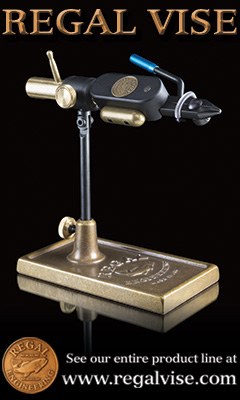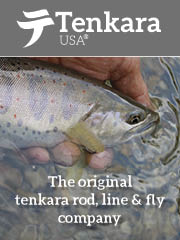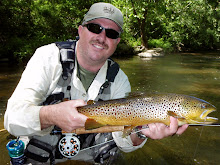Although my writing may not show it, I am an avid warm water fly fisherman. I am forced to be, because the nearest quality trout water is an hour from my house. Fortunately, I am blessed to have a number of warm water venues minutes from my front door. Despite the fact that most of this blog's posts revolve around trout fishing, much of my fishing involves the pursuit of warm water fish.
One of the most effective lures for largemouth bass has to be the plastic worm. For decades, I have been searching for the fly fisherman's equivalent. I believe that search is now over.
At a recent fly tying course offered by Central Jersey Trout Unlimited, I took a break from instructing and sat in on a workshop put on by one of the chapter's most innovative fly tiers, Bill Ninke. Bill introduced me to materials and techniques to tie very effecting looking worm and tube jig imitations. Bill was quick to point out that these flies were not his original patterns. He stated he had picked up the patterns and techniques from a source on the internet. The originator of this wrapping technique is Rich McElligott who works hard for the Illinois Smalmouth Alliance.
These flies are quick and easy to tie and they look great in the water. The pattern's design keeps the long tail from fouling the hook point, an issue I have always had with other worm style flies. The fly is tied in two stages. First take a length of yarn equal to whatever you want the overall length of the fly to be and touch the end to an open flame to taper it. I have been working with a fly that is 5 1/2 inches long. Take the none tapered end and tie it in behind the eye, bead or cone. Take a second piece of yarn three to four times longer than the first and tie it in behind the eye as well. Begin wrapping this longer piece of yarn around the hook shank until you reach the bend. Then continue wrapping the long piece of yarn around the standing portion of the tail. Make seven wraps down the tail then reverse direction and make six wraps back towards the hook. Now continue wraping on the hook ending back at the eye. Whip finish, tie off and your done.
I am adopting this technique and material to several new patterns I am developing. I can't wait to field test them this spring. I also started tying these flies on wire guard weedless hooks which results in a near weedless version that can be cast into heavy cover without the risk of losing the fly. It can be weighted by attaching wraps of lead wire to the hook shank before tying on the yarn.
Recipe:
Hook: Mustad 3366 1/0 or substitute a weedless worm hook
Weight: Brass or tungsten cone or wraps on lead wire
Body: Patons Bohemian Yarn (available at local craft stores)




























